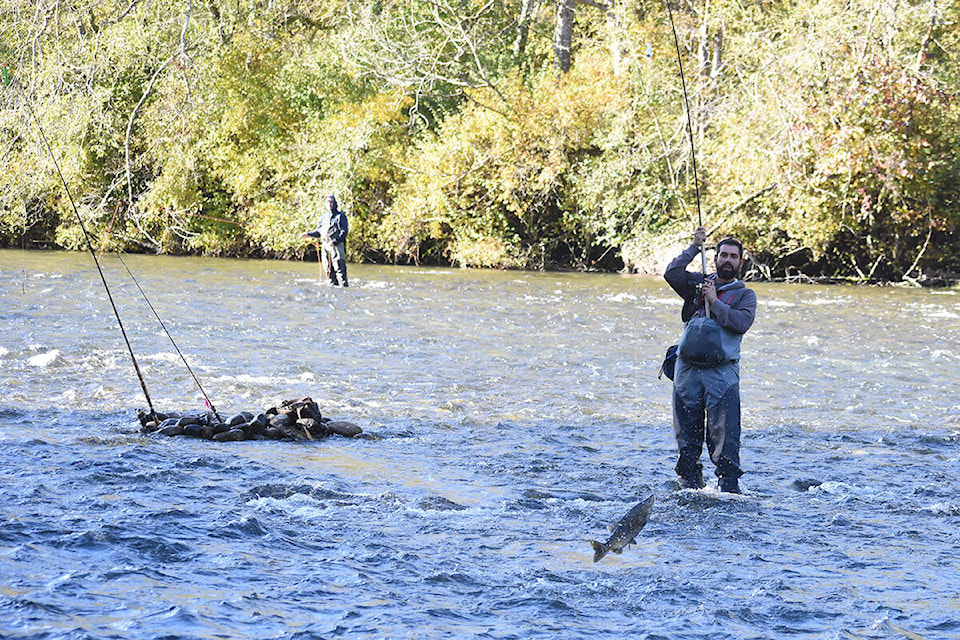The Department of Fisheries and Oceans has issued non-retention orders for several chum salmon recreational fisheries throughout British Columbia, citing low returns.
Non-retention orders, meaning caught fish must be released, came into effect on Oct. 27 for multiple enforcement areas spanning southern coastal British Columbia and parts of Vancouver Island, as well as for several rivers in the Fraser River system. A similar order for the Puntledge, Courtenay and Nanaimo Rivers came into effect on Nov. 1.
In association with these notices, there will also be a reduction in First nation food, social and ceremonial allocation. No commercial fisheries were open for these stocks.
These orders are necessary because of low in-season returns of chum salmon, according to the Department of Fisheries and Oceans (DFO).
“In an effort to conserve Chum stocks returning to Southern B.C. waters, a decision has been made to take a precautionary in-season approach to recreational fisheries,” said Lara Sloan, DFO communications officer, in an email.
Test fishing catches in the Johnstone Strait indicate the return has a low likelihood of meeting the one million critical threshold, while those in the Fraser River predict a return of 481,000 chum salmon, per DFO.
According to data from DFO’s Albion test fishery monitoring station on the lower Fraser River cumulative chum returns in 2021 are well below the average of returns recorded for 1994 to 2020.
Similarly, returns to many Strait of Georgia systems have also been low, with predicted returns also below targets, according to DFO.
In recent years, chum salmon have exhibited “very poor” returns through much of their spawning range, which spans North America and Asia, said Brian Riddell, Pacific Salmon Foundation science advisor.
“This would probably be the second or third year of extremely low returns, and I’m hearing — this is very indirect at this time of year — that it could be the worst return on record, in recent years anyhow.”
As such, the closures come as no surprise, said Riddell.
“If the return is that poor, then clearly those are the right thing to do to ensure we meet some level of spawning escapement,” he said.
The reason the species is exhibiting such low returns is still poorly understood.
But as this trend is being noticed throughout the species’ range, many point towards low ocean survival. Trends in freshwater could be having an impact too, he said.
“It’s the breadth of the effect, and it’s the extent of the effect in terms of numbers that people are associating with ocean survival,” he said. “It could be coastal (too), but it’s a combination, probably, of coastal and deepwater habitats.”
RELATED:
sean.feagan@campbellrivermirror.com
Like us on and follow us on




